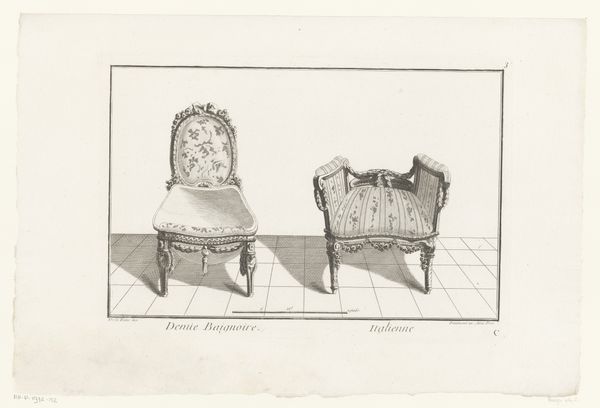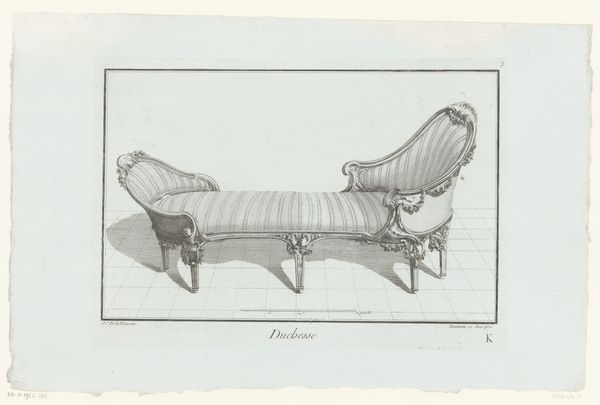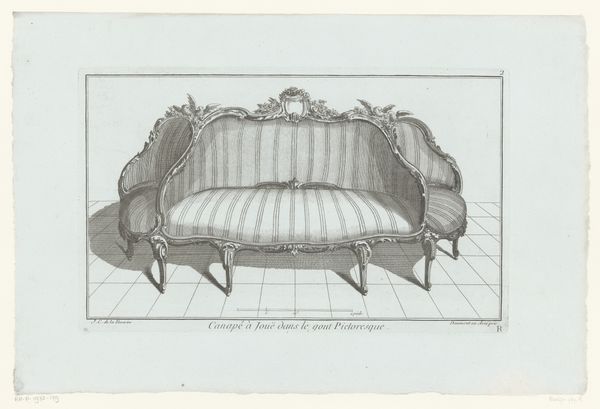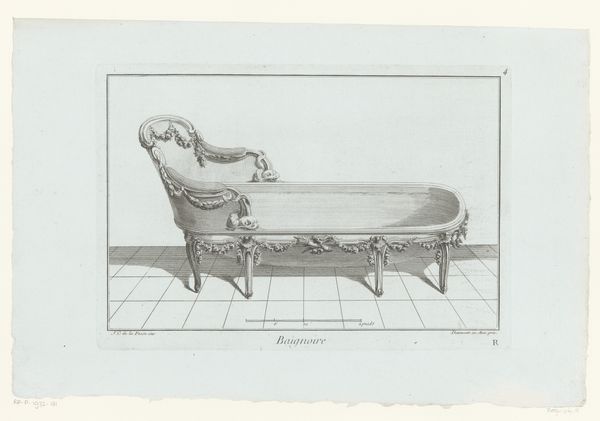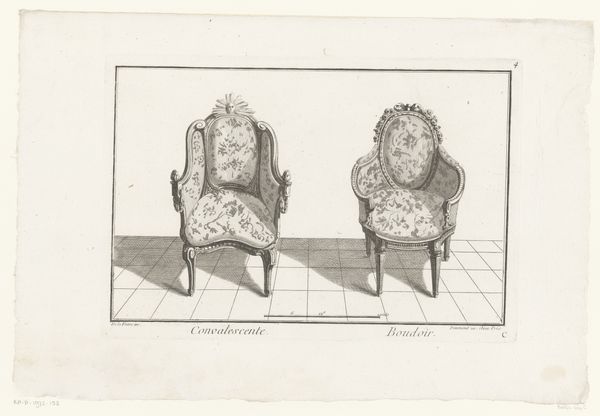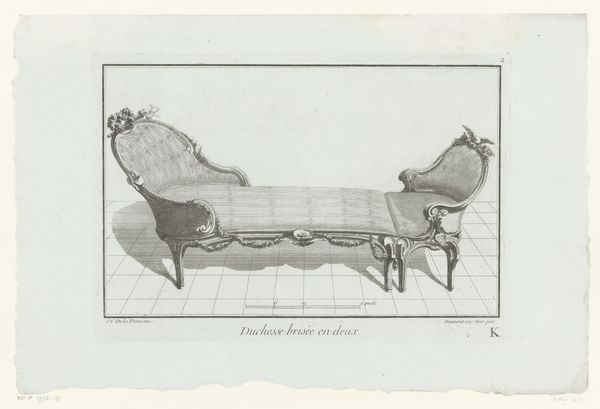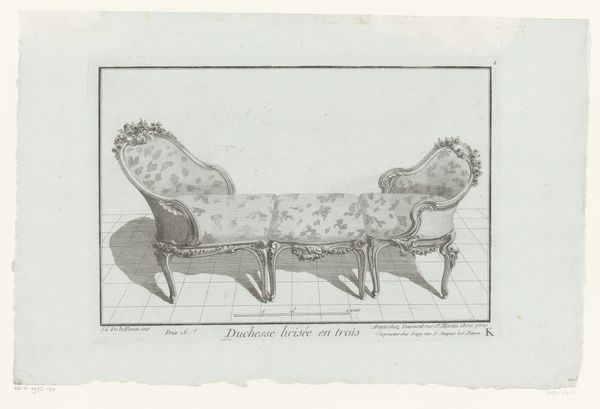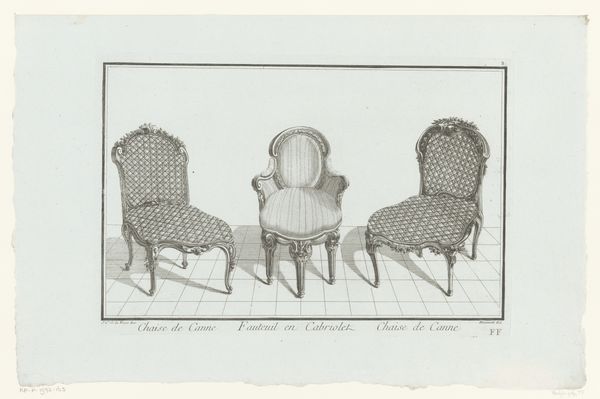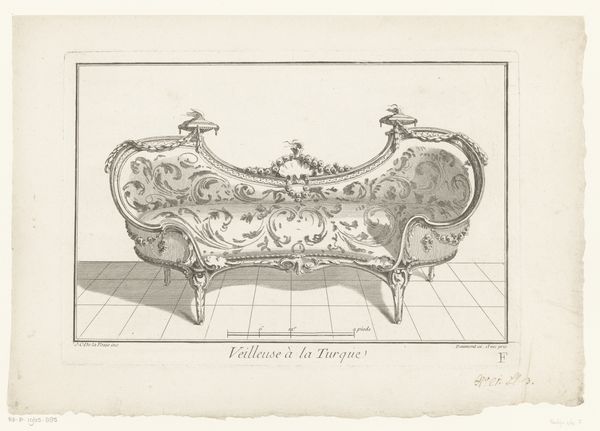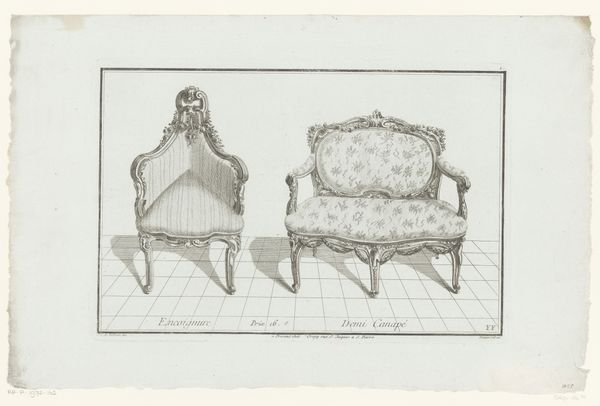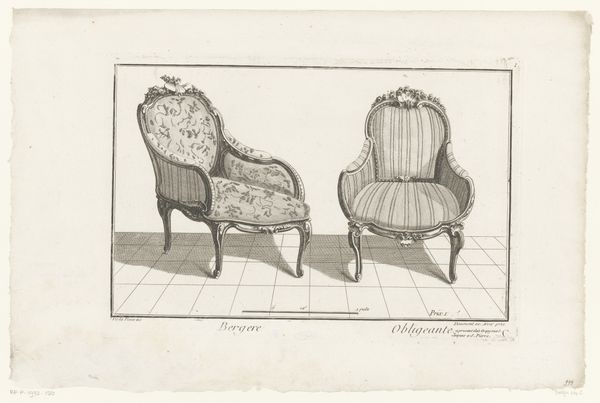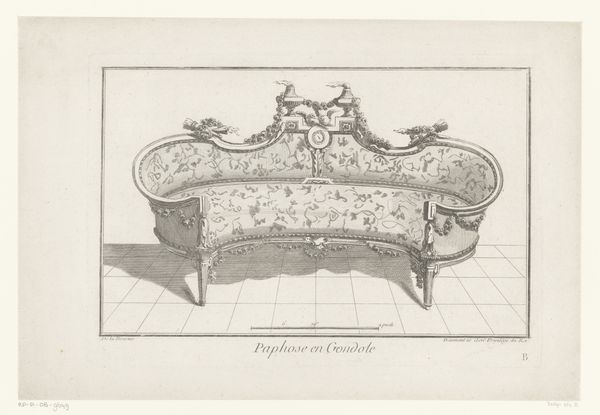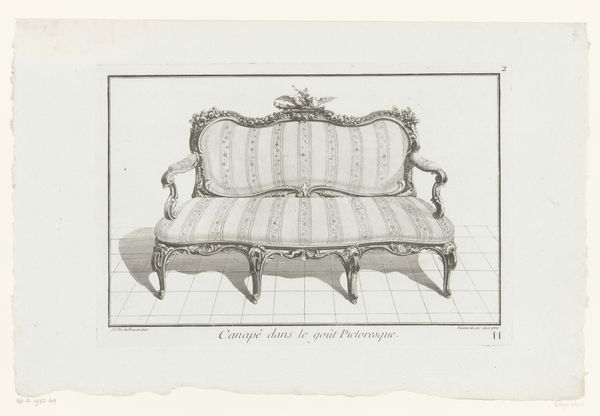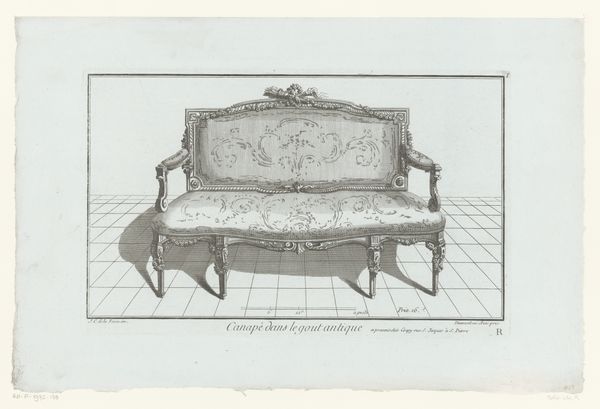
print, engraving
# print
#
old engraving style
#
form
#
line
#
decorative-art
#
engraving
#
rococo
Dimensions: height 232 mm, width 333 mm
Copyright: Rijks Museum: Open Domain
Curator: This delicate print, aptly titled "Duchesse," is from somewhere between 1745 and 1775. We don't know who created it, but the piece employs engraving on laid paper. What do you think when you see this work? Editor: It’s instantly relaxing; that chaise lounge just beckons. I imagine languid afternoons filled with reading. Although, there’s something slightly unsettling about the sharp, almost clinical perspective. It feels more like a blueprint than an invitation. Curator: It’s true. It functions simultaneously as both. It is worth understanding the world of salons and elaborate social rituals in which the "duchesse brisée" became central, signifying leisure and luxury. It became not just a chair, but a key prop in the performance of aristocratic identity. The very design encourages a posture that rejects labor, embracing instead relaxation and contemplation. Editor: So it is like an artifact of status then. You also have to acknowledge how printmaking allowed these signifiers of status to be more widely distributed than if there were only couches available for purchase by, let's say, actual duchesses. And here, in the Rijksmuseum, it becomes part of an institution deeply implicated in forming national identity. The very act of display says, “This is culturally significant." Curator: Exactly. That Rococo style – all those flowing lines and decorative flourishes – embodies an entire value system that later faced radical upheaval. Thinking about its circulation as an image allows us to trace its changing status across social strata. As consumption patterns shift, these images get reproduced, reinterpreted, or even mocked. Editor: Right. Even in its own time, it was probably freighted with complicated meaning. The sharp perspective lends the scene a strange emptiness. If we think about the kind of art that we see in the museum, it asks interesting questions. Questions of luxury and artifice still resonant today. Curator: Agreed. I will forever notice that even this ornamental print has a role in constructing larger systems of taste and social meaning.
Comments
No comments
Be the first to comment and join the conversation on the ultimate creative platform.
